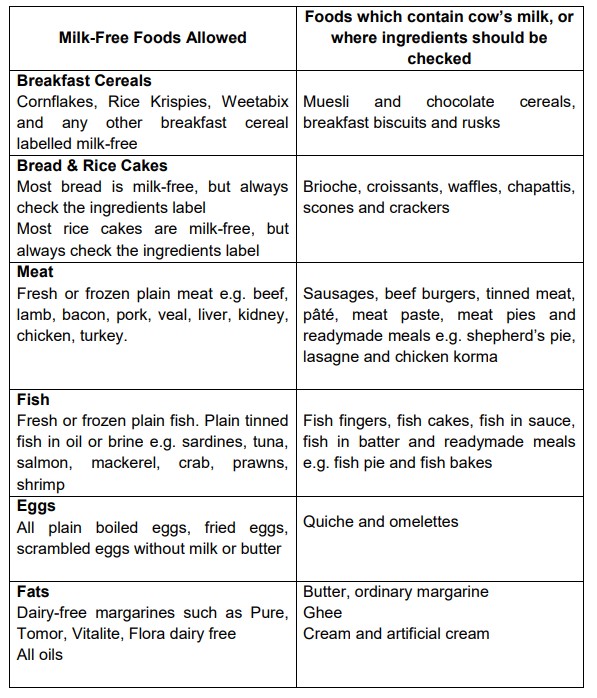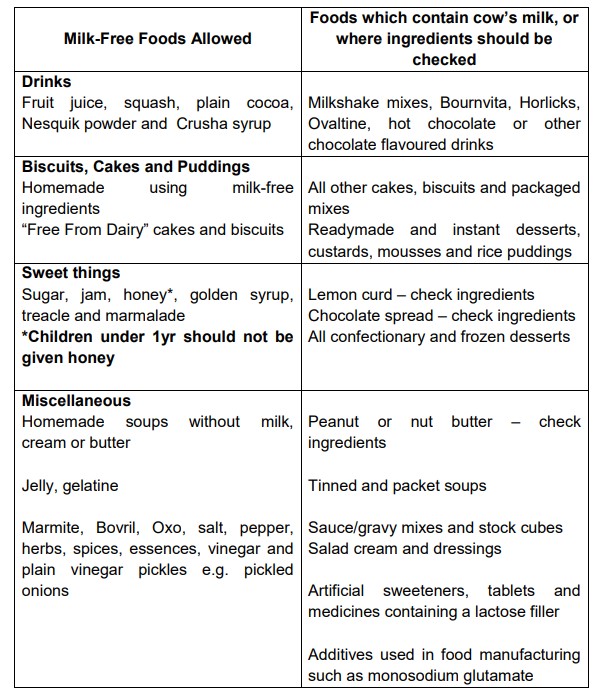Cow’s milk-free diet for children
Please note, this page is printable by selecting the normal print options on your computer.
Why does my child need a cow’s milk free diet?
We have recommended that your child follows a cow’s milk-free milk diet because he/she may have an allergy to cow’s milk protein. There are two main types of cow’s milk protein allergy, lgE mediated and non-lgE mediated. A cow’s milk protein allergy is not the same as lactose intolerance, although the diet for them is very similar.
Remember to check the label to make sure it is cow’s milk-free
EU law states that all foods containing milk, even in the smallest quantities, must have this clearly emphasised on its labelled ingredients list but manufacturers may choose how they do this. This includes all foods that are pre-packed, sold loose or served when you are eating outside of the home. It is important to remember to check the ingredients label of all the foods you buy because many processed and pre-packaged foods unexpectedly contain cow’s milk.
Avoiding cow’s milk in cooking
It is now easier to avoid cow’s milk in cooking and preparing foods thanks to the
large number of cow’s milk free products available. Many supermarkets have their
own ‘Free From’ range which includes products which are free from cows milk and
you may also find it helpful to adjust your own recipes by using milk-free substitutes
such as:
Dairy-free margarine (most margarine contains whey or cow’s milk)
Calcium fortified dairy-free ‘milk’ substitutes such as oat, almond, coconut,
hazelnut, soya and hemp.
Dairy-free cream, yoghurt, custard and ice cream
Dairy-free cheese and cheese spreads
The following charts will help you provide a cow’s milk-free diet for your child:



How will I know if my child has grown out of their milk allergy?
Cows’ milk allergy is common in babies and children. Many children with this condition grow out of it by school age. If you child has a cow’s milk protein allergy, talk to your paediatrician, doctor, health visitor or the dietitian before re-trying milk at home.
Don’t forget!
Since food manufacturers may change the ingredients in their pre-packaged and ready-made foods always check the label of all the foods you buy every time you buy them. Some of the dairy-free ‘milks’ and products are great sources of calcium but they may also contain high amounts of sugar. Always look after your child’s teeth by brushing them at least twice a day. Keep sugary foods and drinks to mealtimes to keep their teeth and gums healthy. Some of the organic milk-free foods available are not fortified with extra calcium. Read the label to ensure that you are choosing the version of foods and drinks that are fortified with calcium where possible
